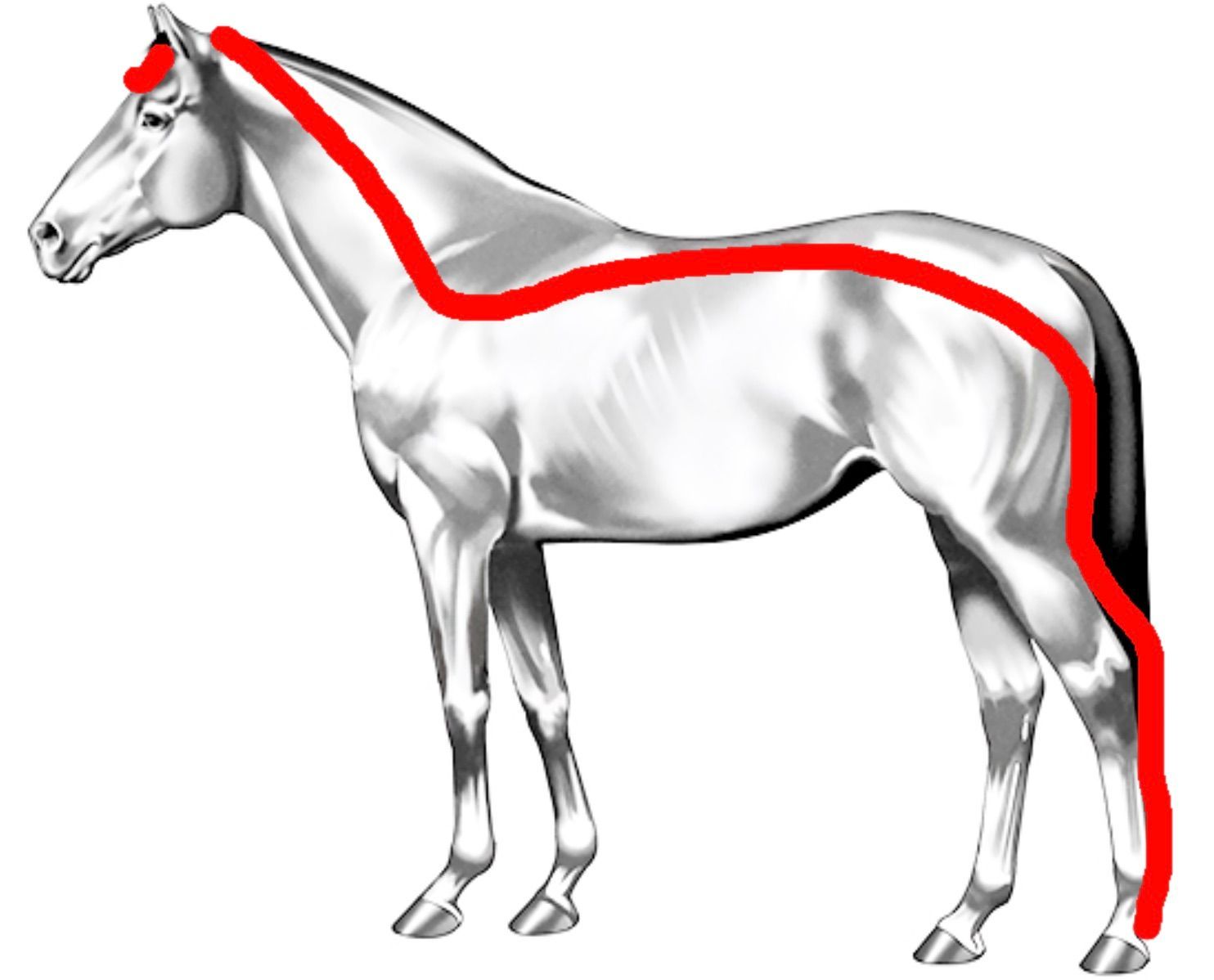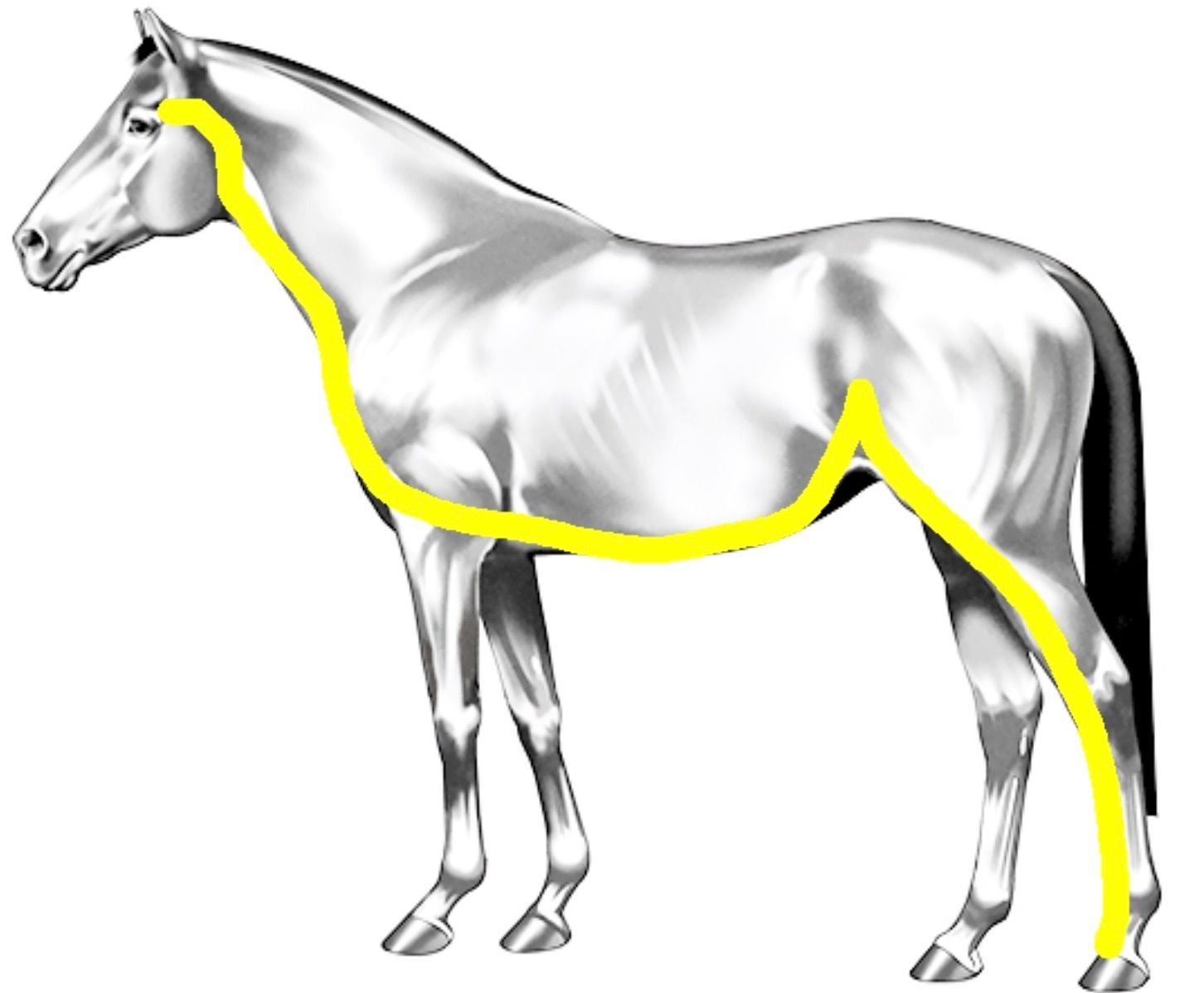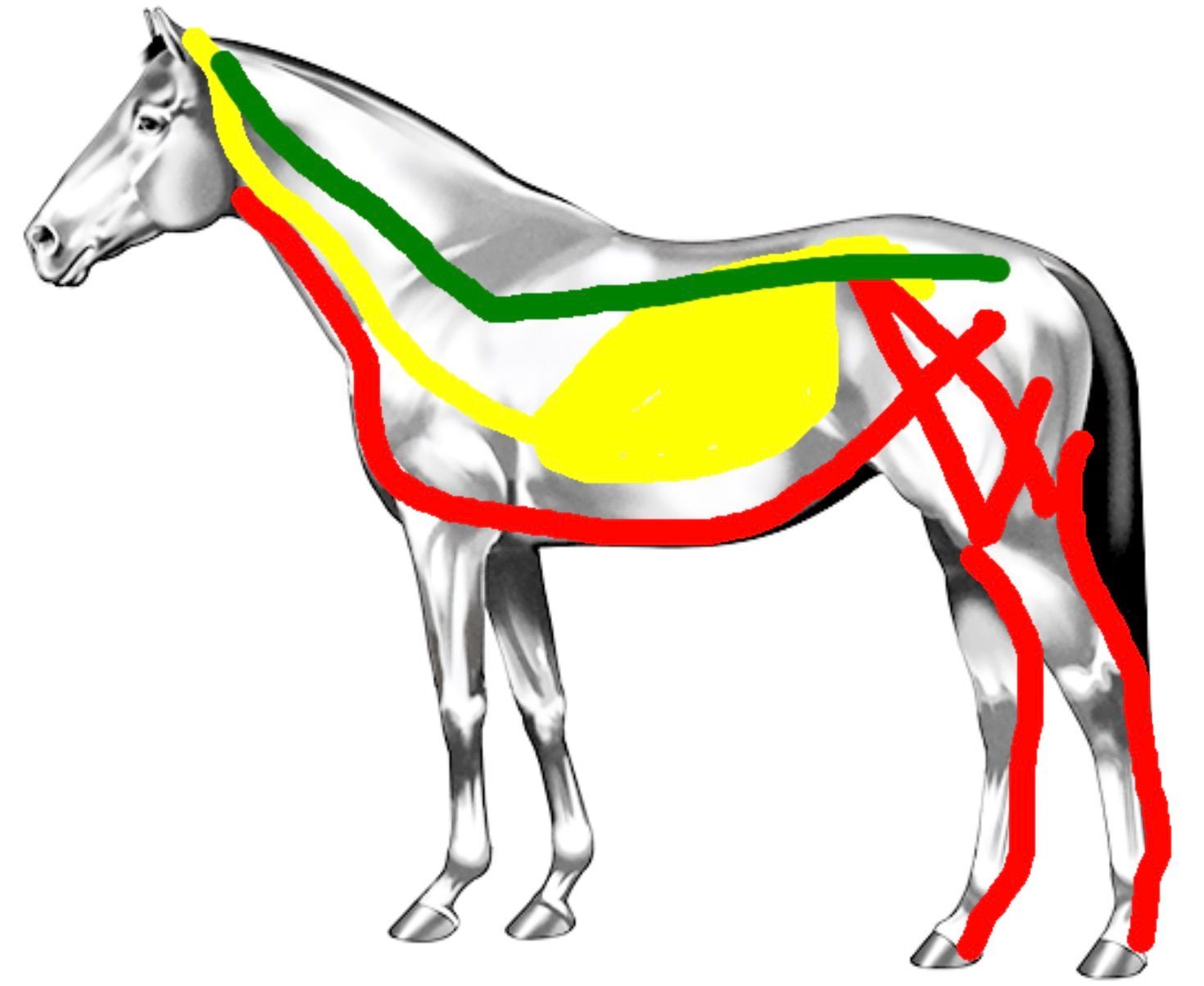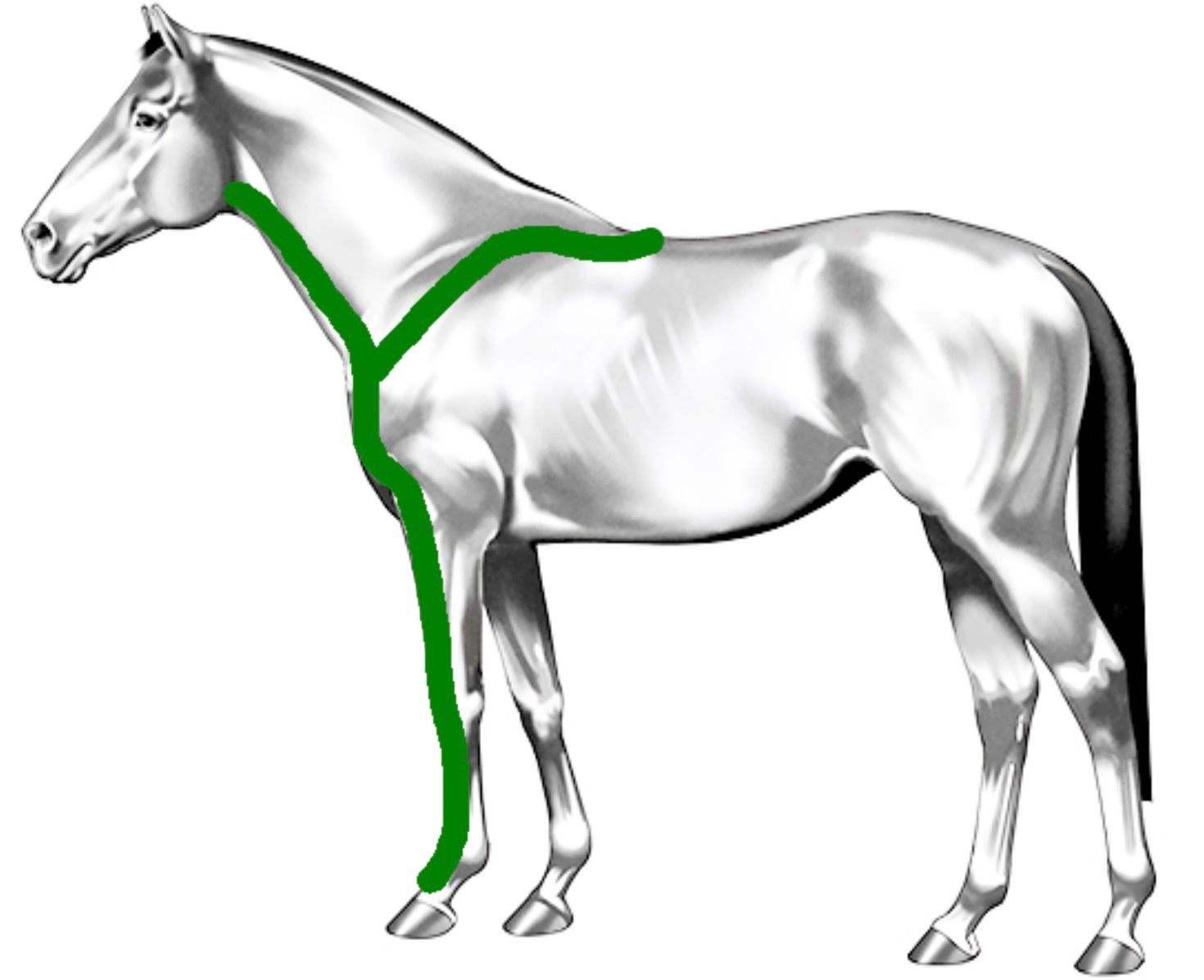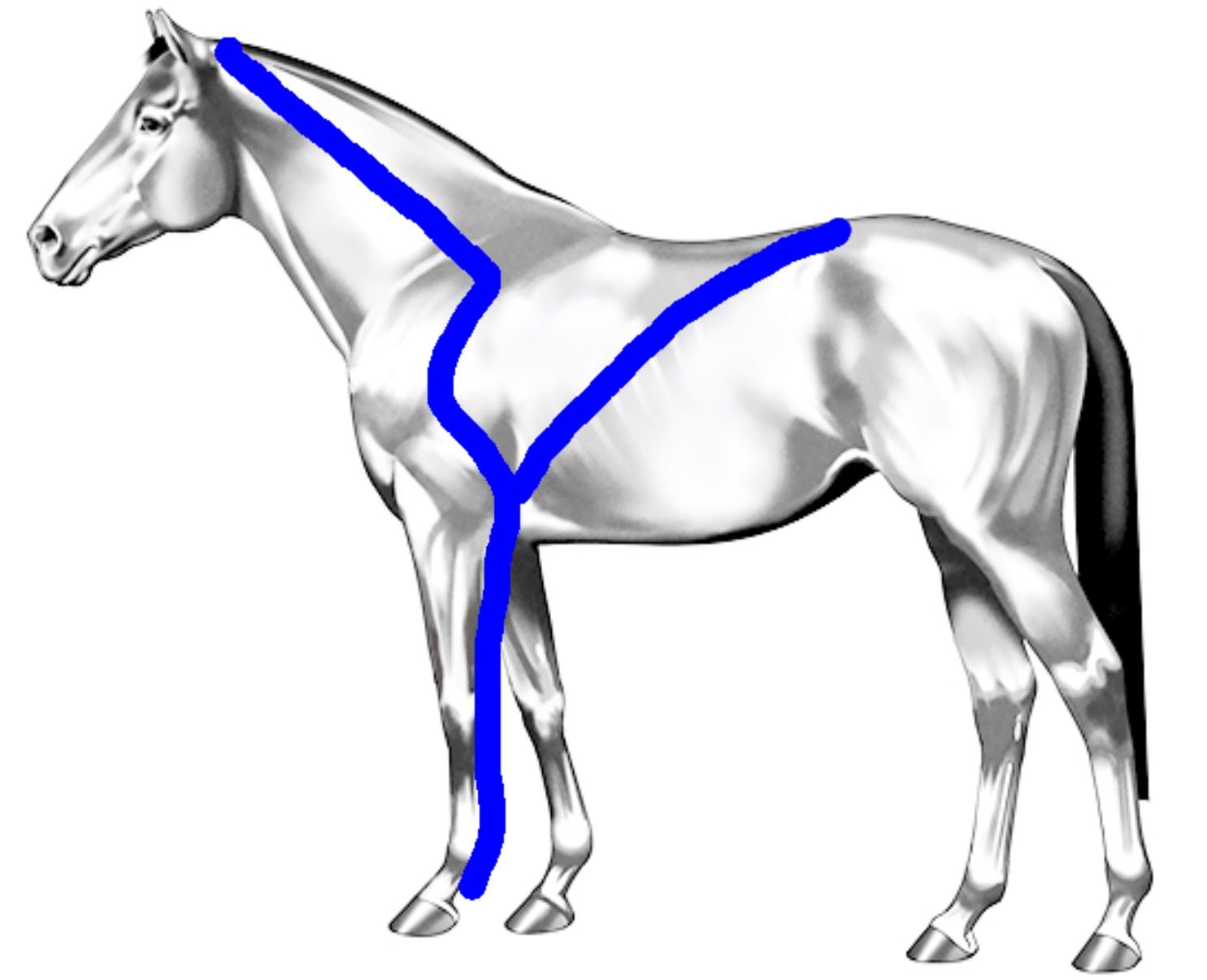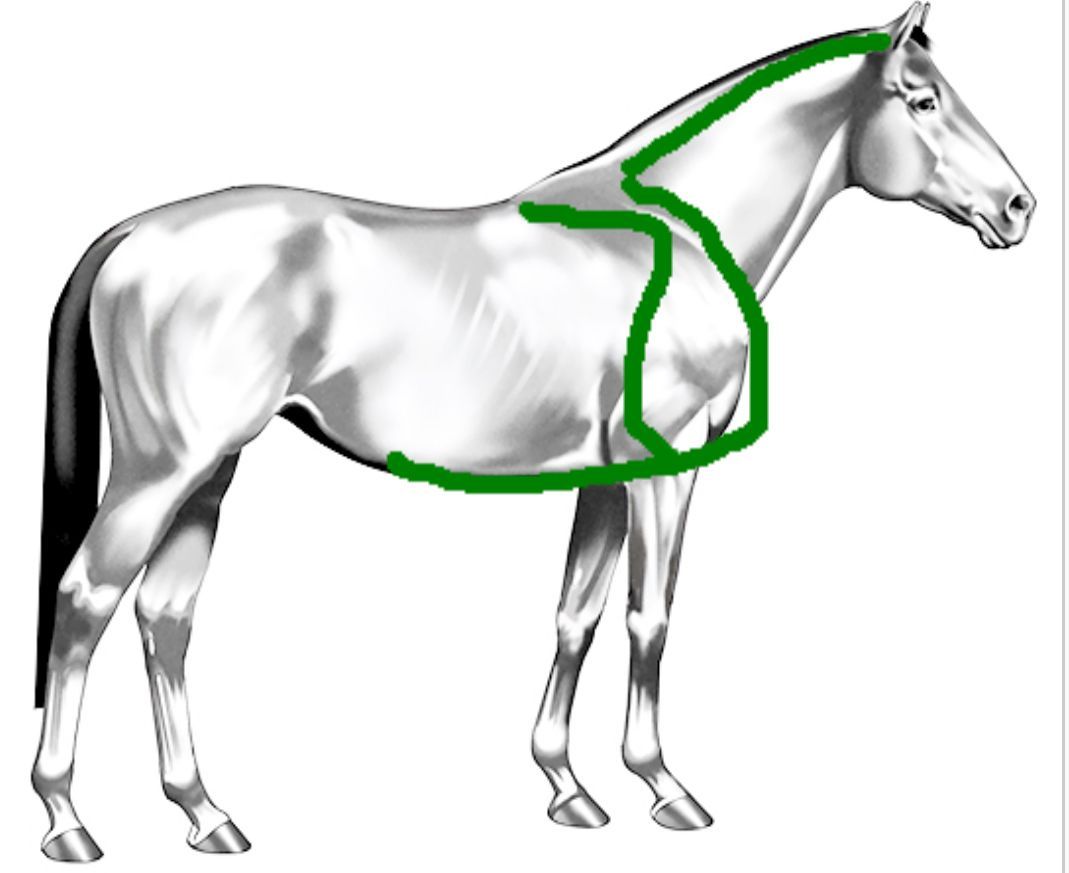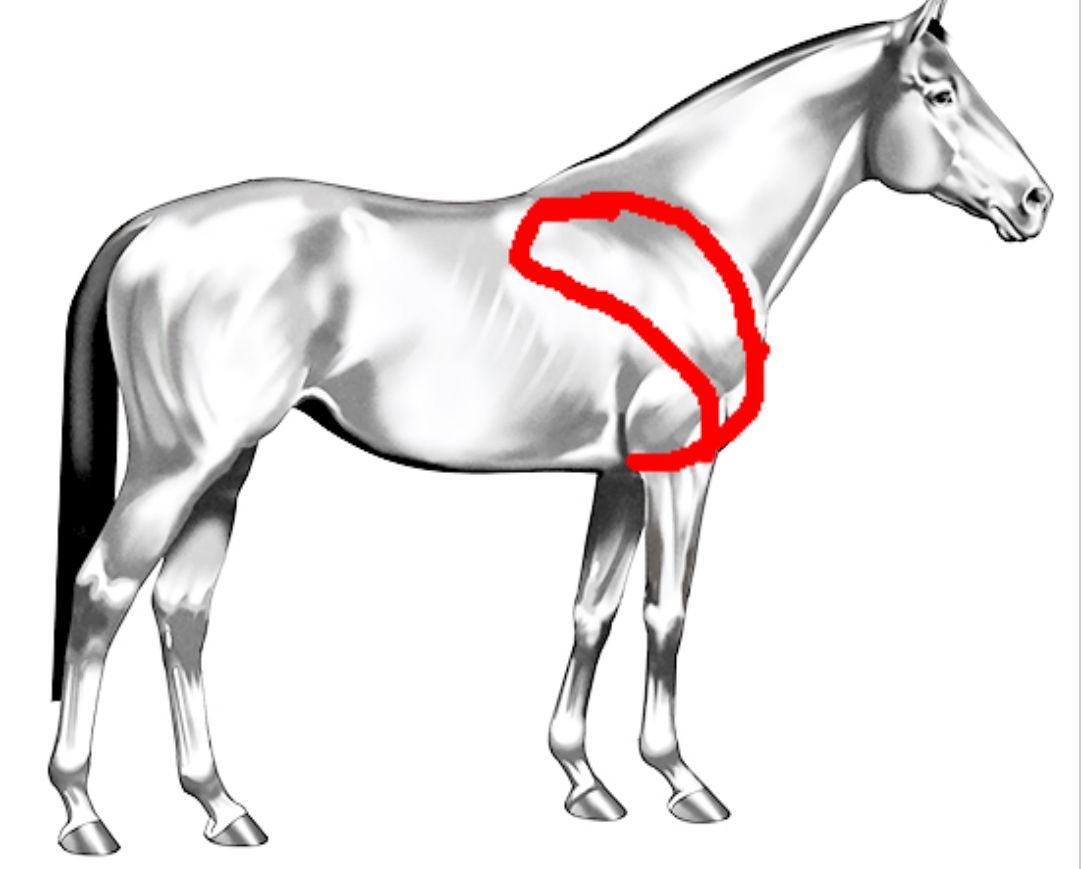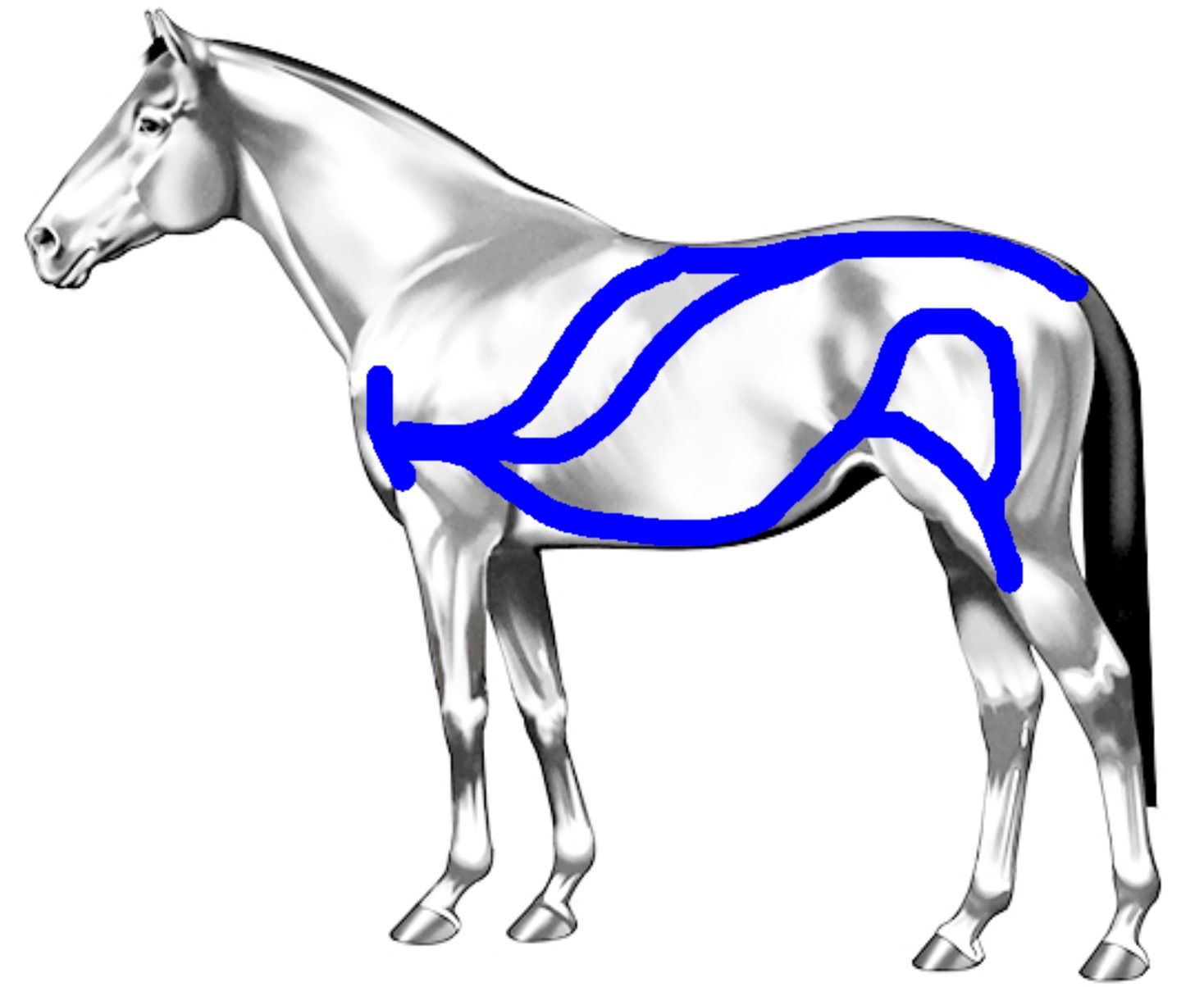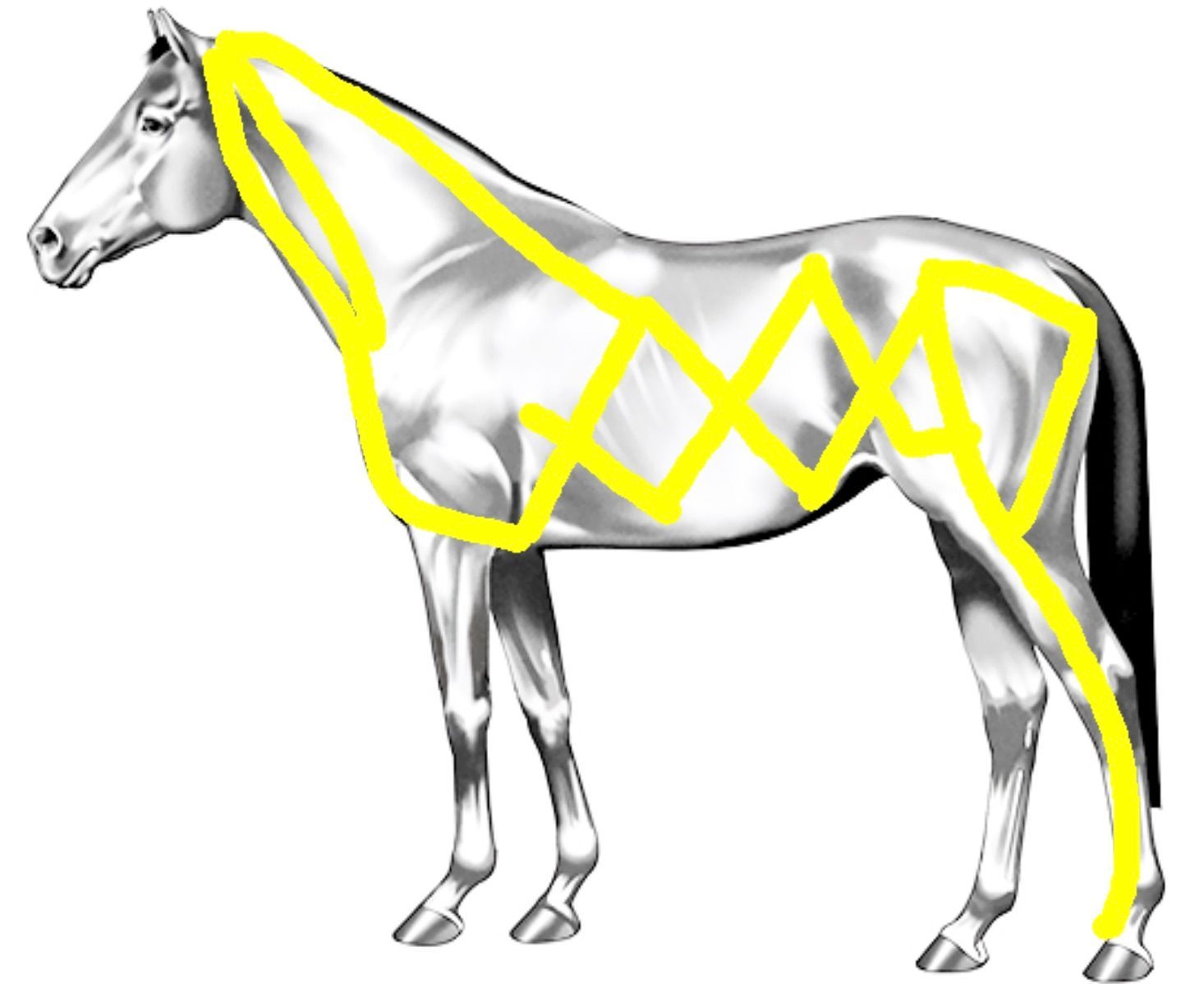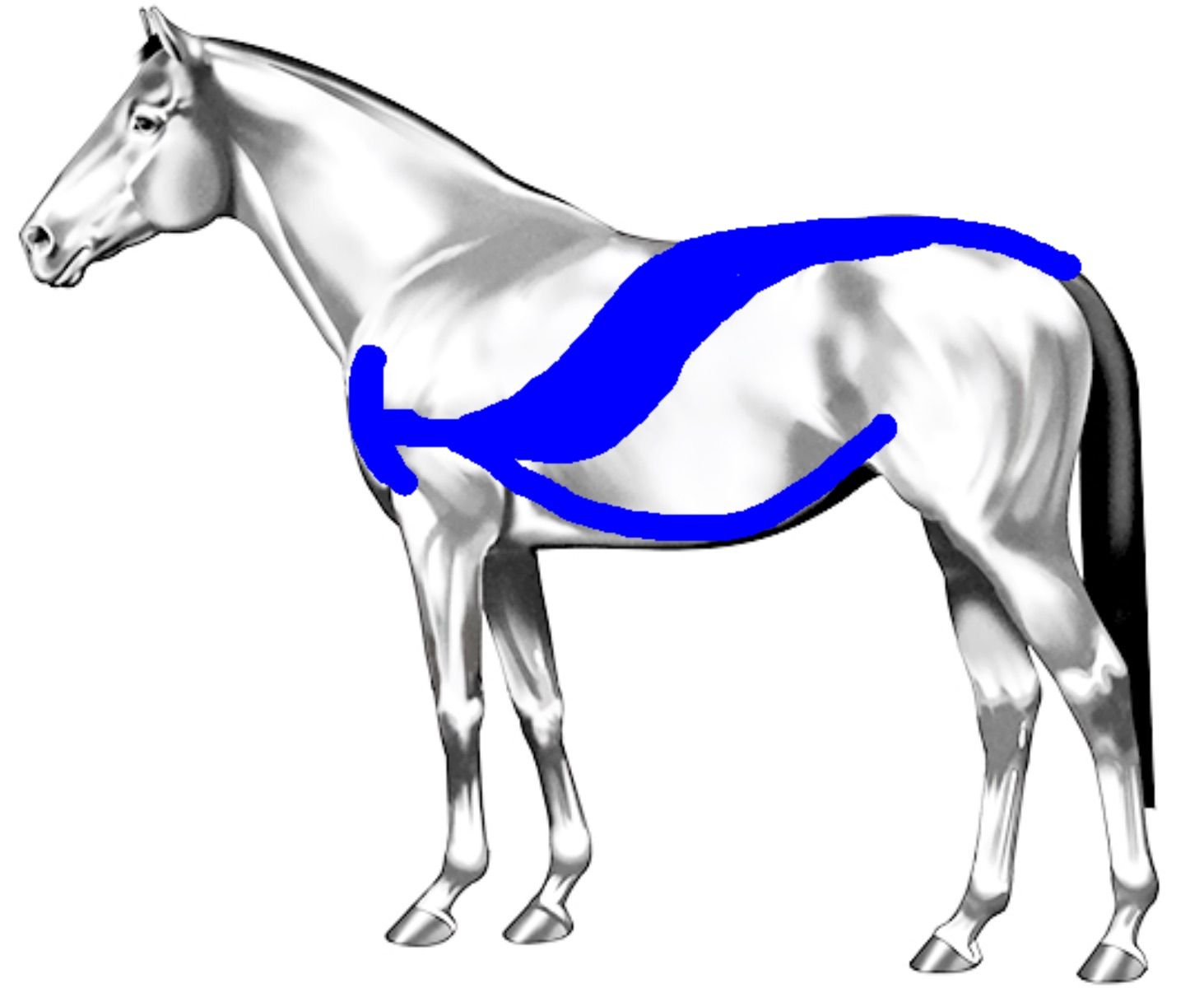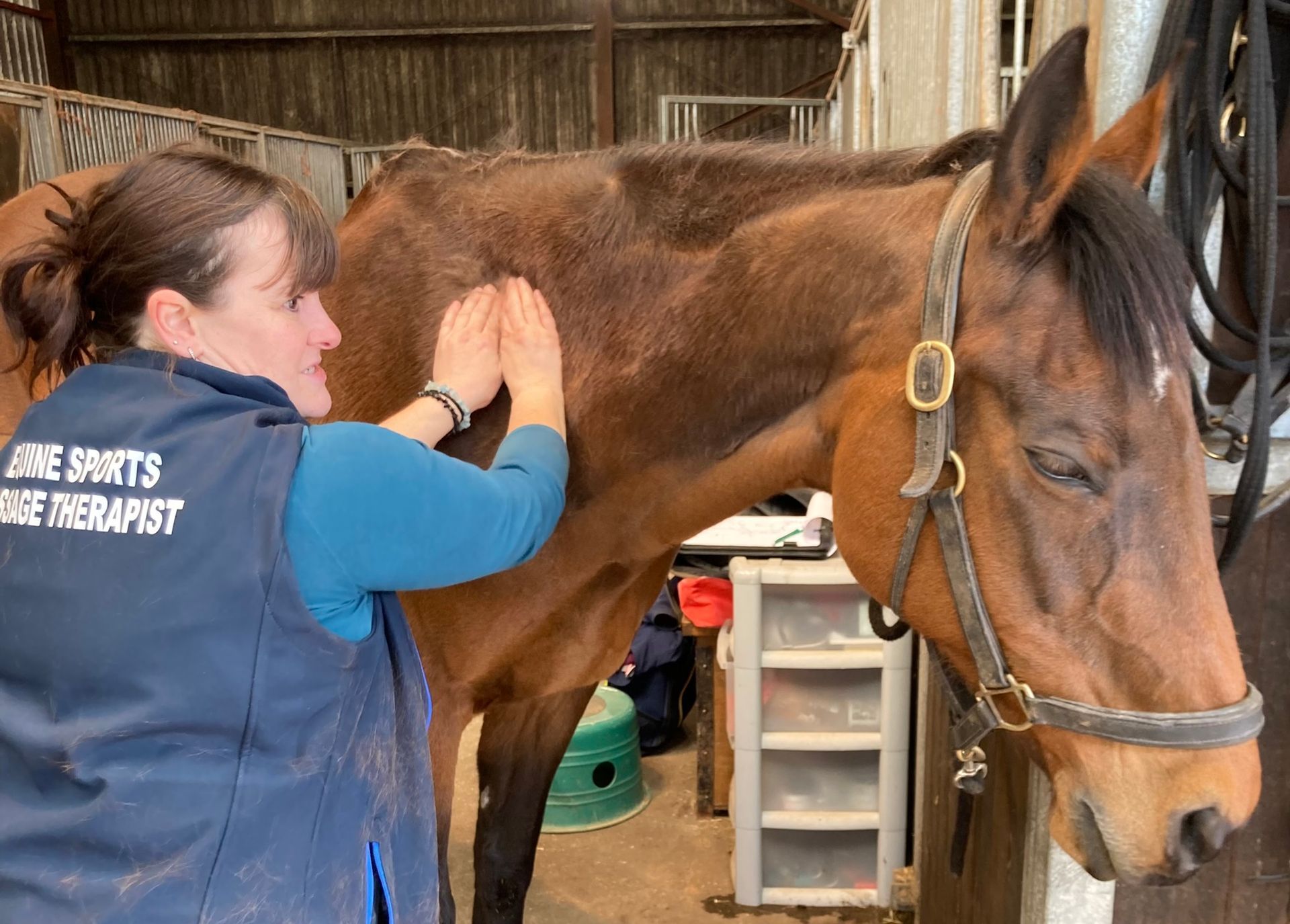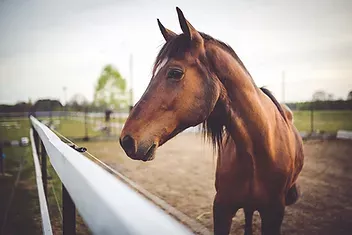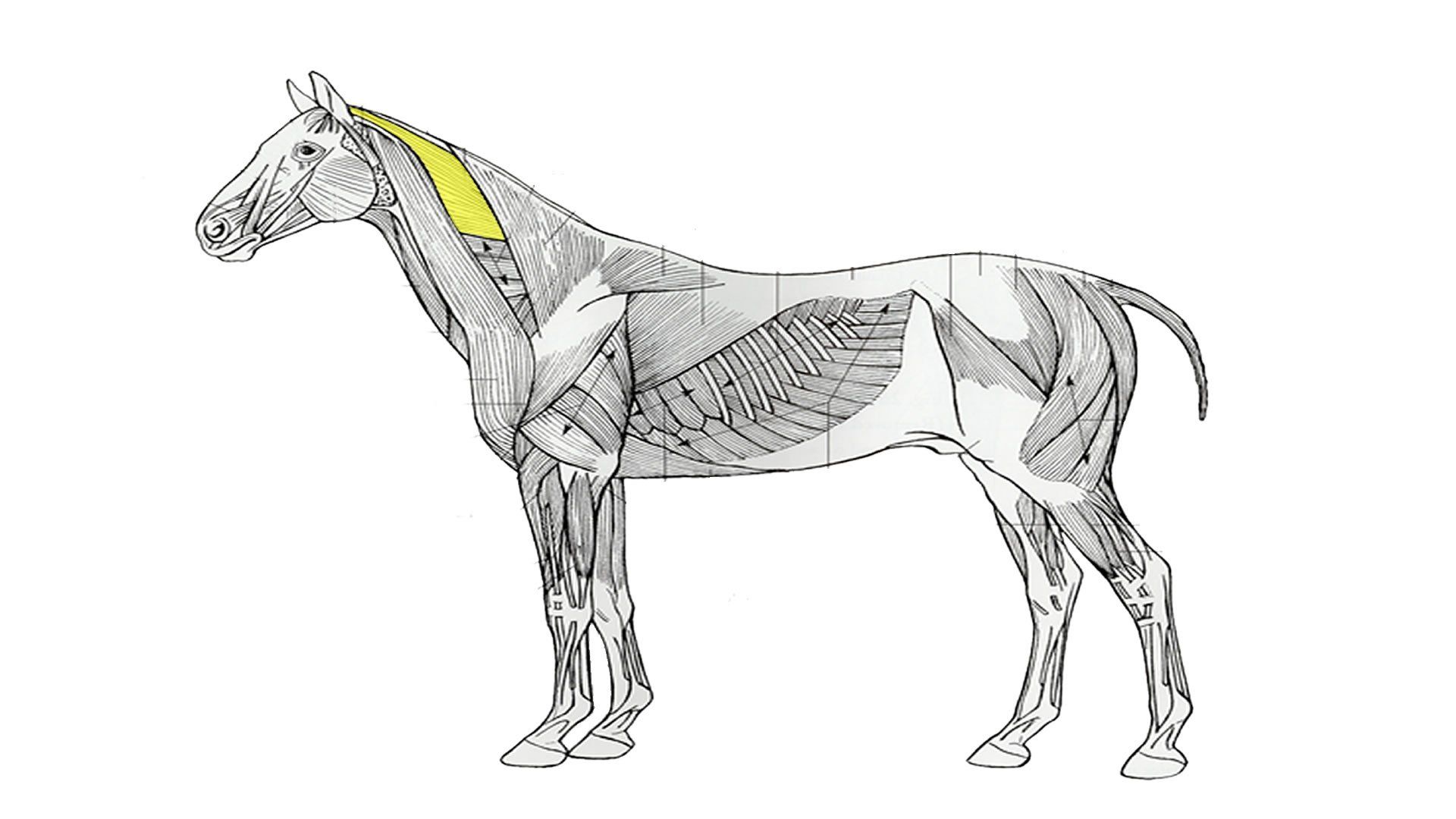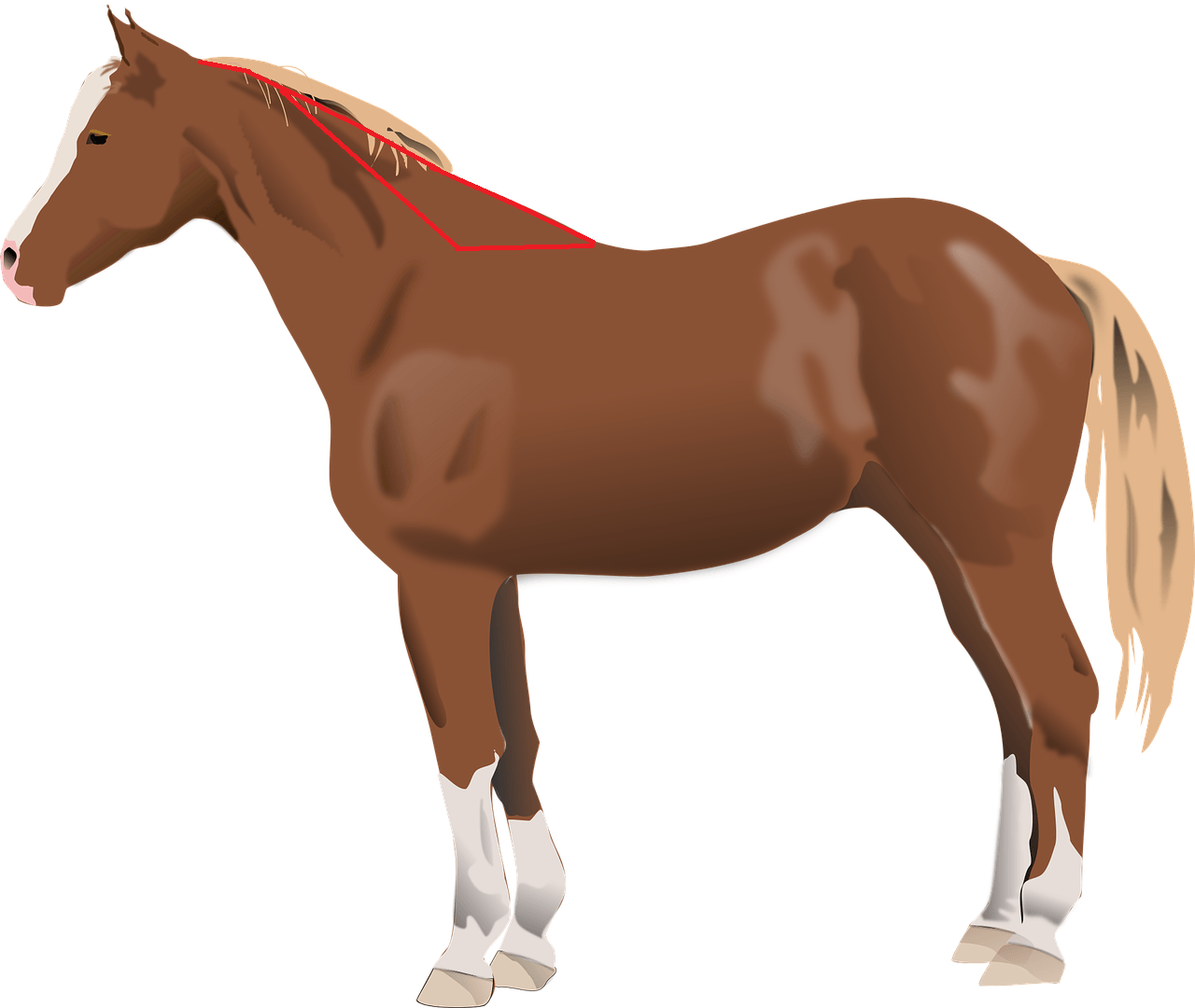First, let's start with understanding fascia. Fascia is a web of connective tissue that runs around the body, enveloping and connecting organs, skeletal frame, muscles, tendons, ligaments, nerves... Basically, it connects all internal structures!
Fascia provides our horses with support, stability, movement and proprioception (awareness of where and how the body is stood or moving). It is made of collagen and elastin, which is why it responds so well to the red light therapy as this helps increase collagen production.
Unfortunately, fascia is easily damaged. Damage makes us think of cuts and grazes into the deeper tissue, but fascia is also damaged by bruising and other internal soft tissue injuries. We can see the physical result of damage from a cut, it forms a scar. This is also true to fascia. All of this damage creates hard, knotty fibres in the fascia. This in turn leads to restrictions in movement, then a compensatory pattern forms and, before we know it, our horse is really starting to struggle.
Fortunately, these areas of knotty bands in the fascia can be addressed and improved with myofascial release. Myofascial release involves the application of various techniques including pressure, release and movement, to remove tension and knots in the fascia. It is a "lighter" treatment than a deep sports massage but just as highly effective. If our horse has tight fascia it stands to reason that eventually the underlying muscles will become tight as the problem expands. Releasing muscle and not the surrounding fascia will not fully address the issue and tension will recur. However, treating the surrounding fascia as well as the muscle will allow the muscle to find its natural state and settle back into its equilibrium of contraction and expansion.
Fascia runs in bands around our horses' bodies, and ours! These bands are called kinetic chains. There are eleven kinetic chains in the horse's body and these chains help us understand compensatory patterns and where the root cause of an issue might lie. By releasing the fascia along these chains I can help improve the range of movement, ease discomfort, improve structural alignment and aid rehabilitation and healing.
➕ 🙌 Plus... I have discovered that by using these chains I can help shift sticky energy and send Reiki around the body to help areas where your horse might be in too much discomfort to allow direct contact or direct energy work.
To wrap things up... Fascia and its chains... What an amazing feature of the body! 🤩 And yes, "wrap things up", a total fascia related pun intended!


